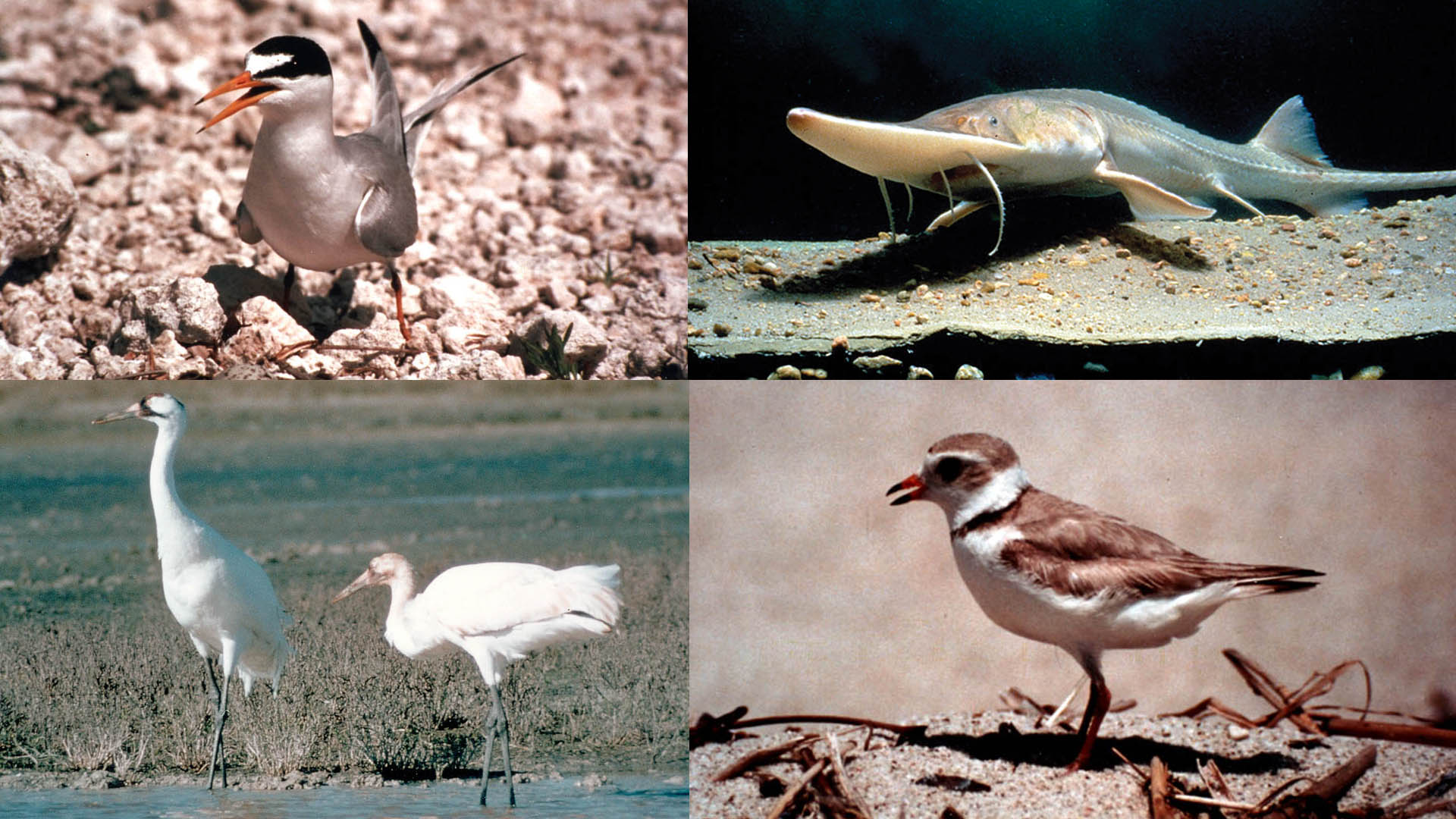Platte River Recovery
Protecting Our Rivers, Endangered Species and Water Use
Northern Water plays a voluntary yet vital role in the Platte River Recovery Implementation Program (PRRIP), a collaborative effort to protect and restore habitats in the Platte River Basin for four federally listed species: the whooping crane, least tern, piping plover, and pallid sturgeon. This program also helps safeguard existing and future Colorado water uses from potential conflicts under the Endangered Species Act (ESA).
Initiated through discussions in 1994 and formally launched in 2007, PRRIP is set to continue through 2032. The states of Colorado, Wyoming, and Nebraska, along with the U.S. Department of the Interior, committed to protecting 10,000 acres of habitat in Nebraska and delivering, on average, up to 150,000 acre-feet of additional water annually. This water helps reduce shortages in meeting U.S. Fish and Wildlife Service target flows in the Big Bend Reach—an 80-mile stretch of the Platte River between Overton and Chapman, Nebraska.
The program is guided by a comprehensive master plan that uses Adaptive Management to improve the ecological health of the river system. This approach allows stakeholders to better understand the habitat needs of threatened and endangered species while ensuring that water development and use can continue responsibly and sustainably.

Representing Colorado Water Users
Northern Water has been a principal negotiator of the program from the beginning, representing Colorado water users in the South Platte Water Related Activities Program (SPWRAP). Formed in 2007, the non-profit SPWRAP is the vehicle by which Colorado water users through annual dollar assessments (used for water project costs) may participate in the PRRIP and obtain regulatory benefits provided by the program. Northern Water, through SPWRAP, provides as-needed technical support for the necessary water management and accounting, and for the ecosystem recovery efforts of PRRIP on behalf of Colorado water users.
The Tamarack Project
As part of the South Platte River recovery efforts led by the South Platte Water Related Activities Program (SPWRAP) and the State of Colorado, the Tamarack Project uses managed groundwater recharge to improve river flows during critical periods. This helps support endangered species in the Platte River while also enhancing wildlife habitat at the Tamarack Ranch State Wildlife Area.
The project works by retiming river flows: water is pumped or diverted from the river through nearby wells and ditches into strategically located recharge ponds on both public and private lands between Sterling and Julesburg. These diversions occur when Colorado water demands are low and river flows are in excess. The water then infiltrates into the ground, replenishing the tributary aquifer. Over time, the aquifer naturally releases this stored water back into the river, contributing a known volume—on average 10,000 acre-feet annually—to help meet U.S. Fish and Wildlife Service target flows in support of the Platte River Recovery Implementation Program (PRRIP).
In addition to supporting endangered species, these managed recharge efforts help offset the impacts of new water development in Colorado, ensuring a more balanced and sustainable approach to river management.
Tamarack Project Map